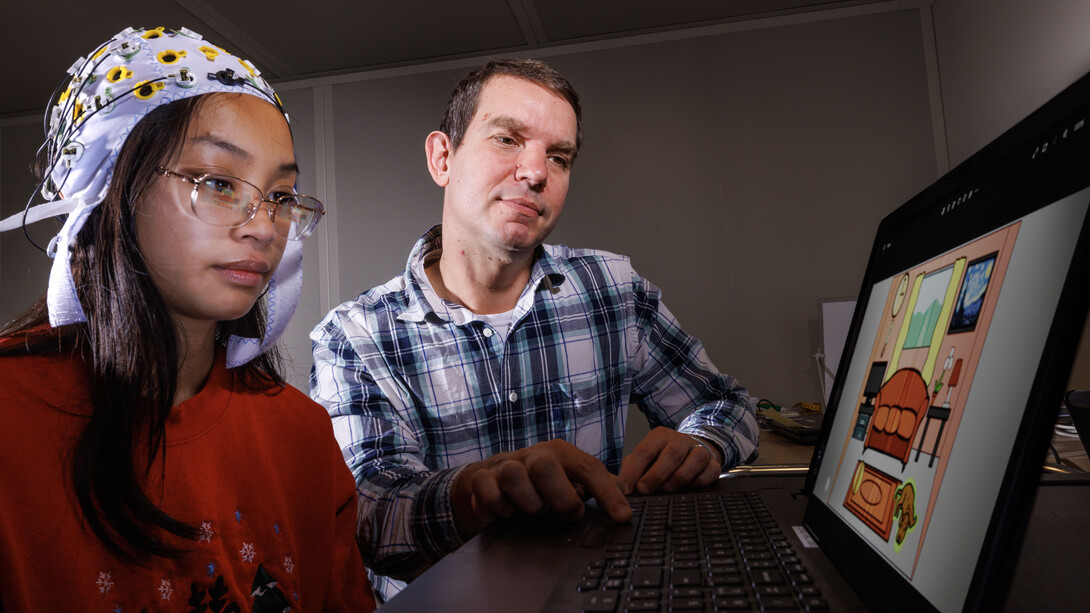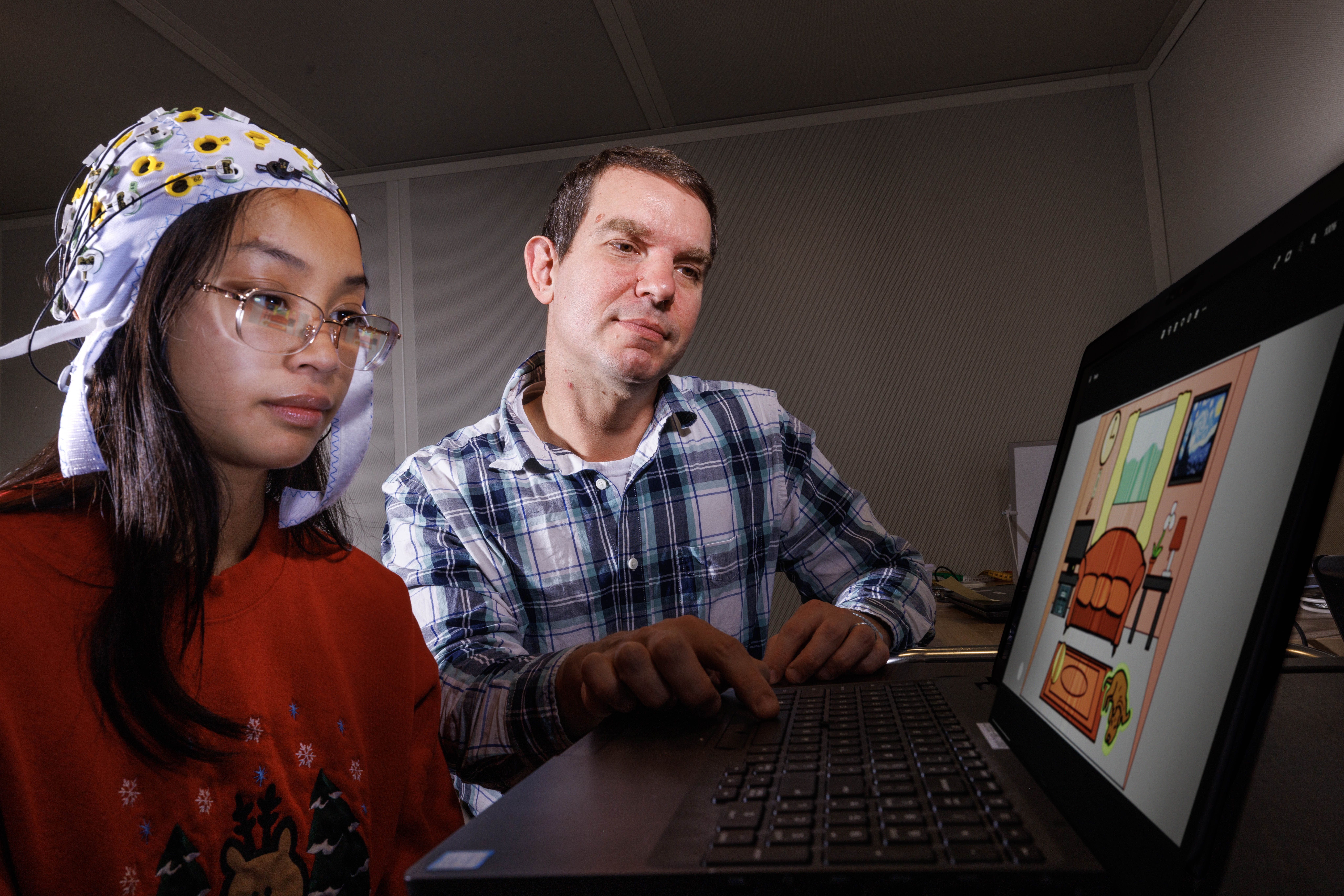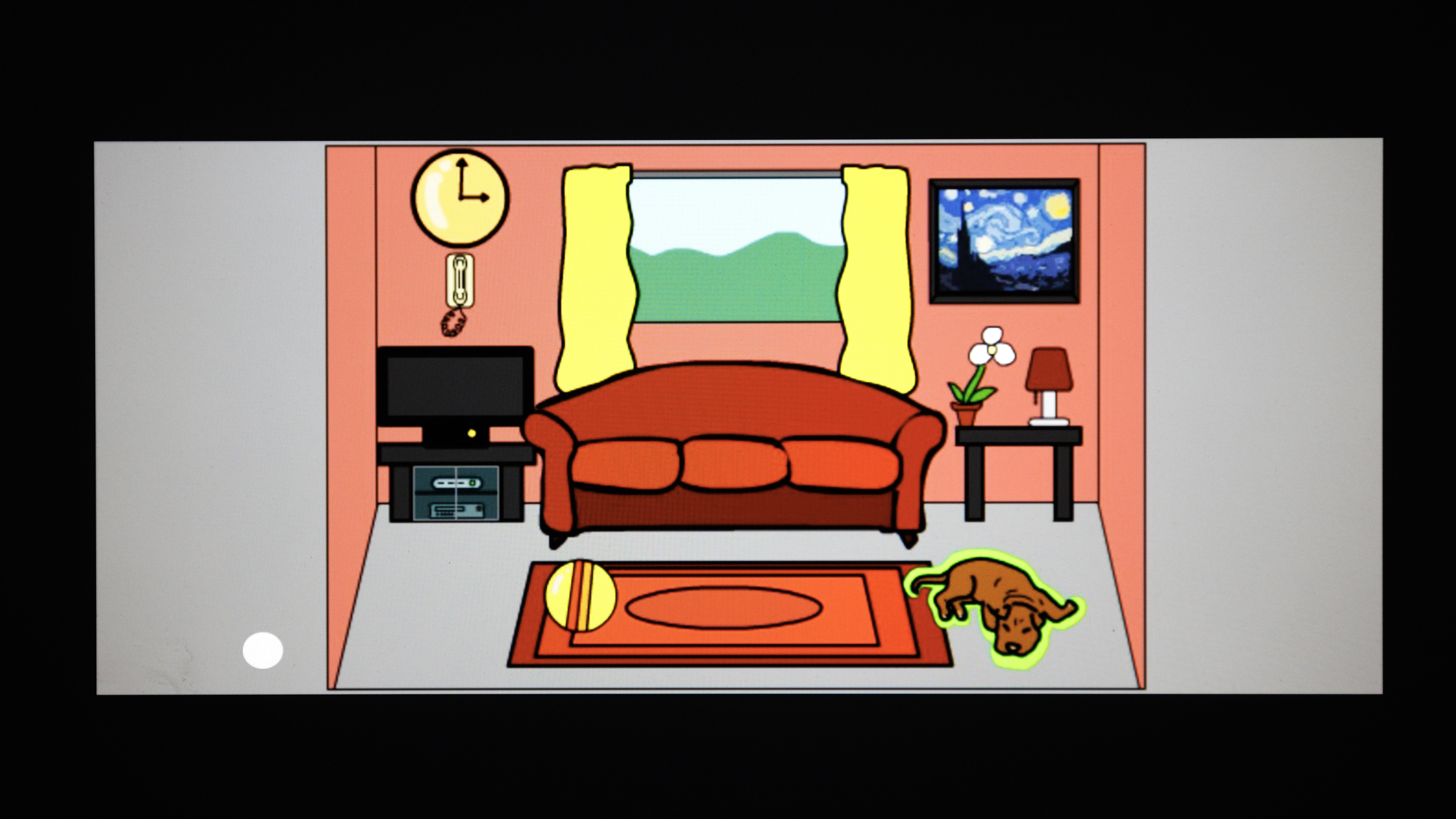
A Husker researcher is leading a project to reimagine brain-computer interface communication for children with severe disabilities who struggle to use existing assistive devices, which often require the user to touch a screen or look at words.
With a five-year, $585,000 grant from the National Science Foundation’s Faculty Early Career Development Program, Kevin Pitt and his team will build on findings from his previous research to develop new supports for children who face challenges with communication and movement, such as using their hands. Pitt is among a record nine Husker researchers who earned CAREER awards in 2024.
“We want to develop a new display, incorporating real-life pictures, such as photographs, to make (brain-computer interface) accessible to a broader range of children with varying cognitive and language skills,” said Pitt, assistant professor of special education and communication disorders and a research affiliate of the Nebraska Center for Research on Children, Youth, Families and Schools at the University of Nebraska–Lincoln.
About 97 million people worldwide have disabilities that require alternative communication devices for support. However, many disabled children do not possess the motor abilities and spelling skills needed to use such devices, leaving them marginalized and unable to benefit from the technology.
For children with severe speech and physical impairments, not having reliable tools to communicate can greatly impact their well-being and ability to achieve their full potential. The inability to meaningfully communicate often leaves them feeling isolated and disconnected from those around them.
Brain-computer interface continues to evolve as a tool to enhance quality of life for people with severe disabilities. The new technology helps children communicate by creating a direct communication pathway between the brain and an external device, enabling them to access computers for communication by using only their brain waves.
Based on data from his 2022 pilot study of adults with severe speech and physical impairments, Pitt has tailored his research to focus on children.

Pitt and his team are again using the P300-BCI speller device, which helps people communicate by measuring brain activity through electrodes in a non-invasive cap with sensors. To control the device, individuals typically view letters or symbols on a computer display. When the desired item is highlighted, the user’s brain emits an electrical spike detected by the brain-computer interface, which allows the selection of pictures to communicate words and sentences.
For this study, children will use a device that shows real-life pictures instead of letters. This system will allow researchers to be more inclusive of individuals with emerging language skills and will promote effective clinical use of the technology for both healthy children and those with severe disabilities.
Pitt plans to recruit about 75 typically developing children and 50 children with disabilities, ages 8-13. Each child will attend a session at the Augmentative and Alternative Communication Translation Lab in the university’s Barkley Memorial Center, where they will view pictures as their brain waves are recorded. They will also create their ideal screen display, enabling researchers to identify their system preferences.
This study, Pitt said, will ultimately lay the groundwork for final development of a P300-BCI based on children’s preferences.
“We’re really looking at what the brain signal does, and what kids prefer,” Pitt said. “We want to observe how the brain signal changes when we use real-life pictures and highlight items on the screen the way children prefer versus ways that we think they want. If they become more engaged looking at something they prefer, we should see better brain signals.”
Pitt’s research includes education goals such as supporting advances in brain-computer interface and augmentative and alternative communication; workforce training; and acceptance of those with disabilities. Findings will be used to inform new, hands-on educational content for college students enrolled in the university’s AAC course, introducing them to brain-connected AAC technology.
“We want to broadly increase BCI education by allowing access to hands-on BCI experiences and educational modules for our students,” he said. “We must make that available for those who will be on the front lines, implementing the technology. We’ve got to be able to educate the next group of professionals to use this technology.”
The National Science Foundation’s CAREER award supports pre-tenure faculty who exemplify the role of teacher-scholars through outstanding research, excellent education and the integration of education and research.
Share
News Release Contact(s)
Tags
High Resolution Photos

HIGH RESOLUTION PHOTOS








